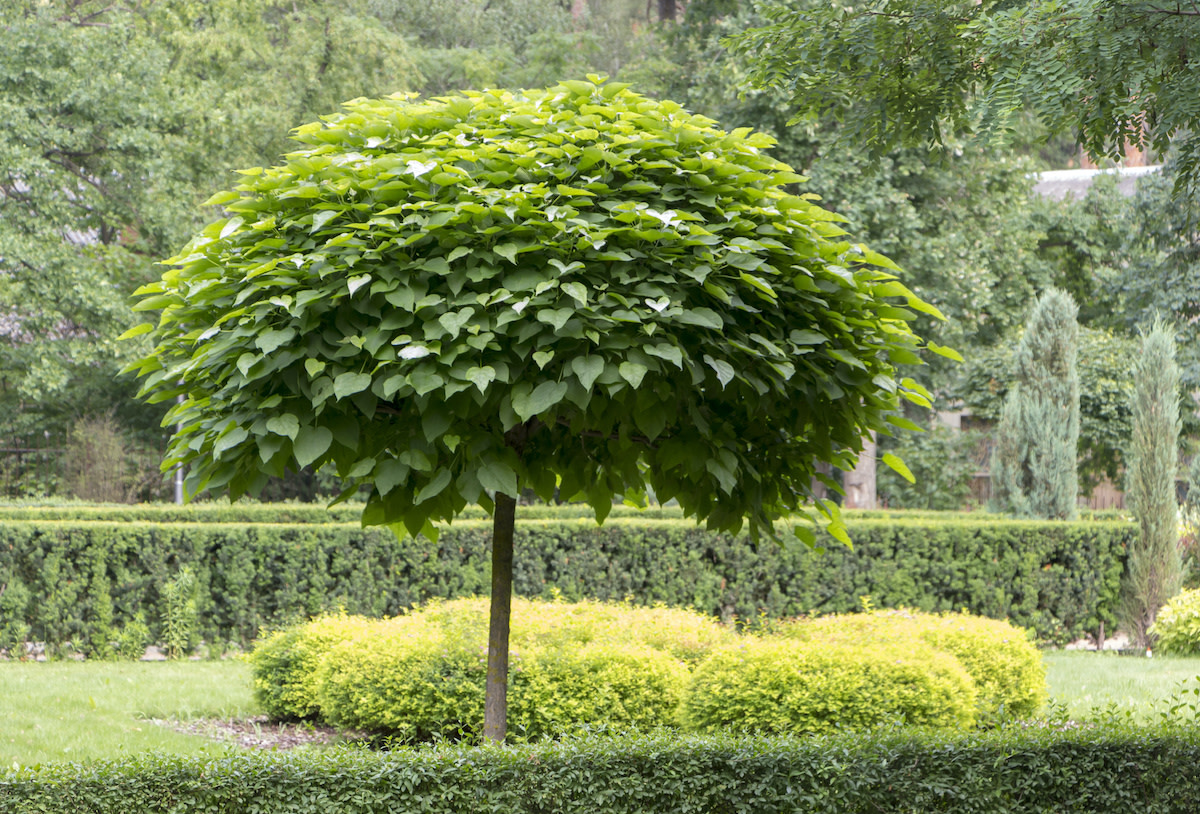Catalpa Tree Care: 7 Tips for Growing Cigar Trees
Written by MasterClass
Last updated: Nov 23, 2021 • 3 min read
Catalpa trees are lush, tall, and ubiquitous throughout certain regions of the United States. Native to North America, these trees boast large leaves and panicles of orchid-like, showy flowers. Learn more about caring for catalpa trees.
Learn From the Best
What Are Catalpa Trees?
Catalpas are North American deciduous trees (members of the Bignoniaceae plant family) known for their heart-shaped foliage, bright white or yellow flowers, soaring heights, and symbiotic relationship with catalpa sphinx moths. Other common names for catalpas include catawbas and cigar trees. The flowers of these trees are naturally attractive to many pollinators. These ornamental trees show off their flowers and foliage best in early summer, but they don’t offer much in the way of fall color.
What Are Catalpa Sphinx Moths?
Catalpa sphinx moths (Ceratomia catalpae) feed on catalpa trees as their only food source. While larvae and full-grown sphinx moths can eat hefty portions of the trees’ foliage, catalpas are capable of growing back leaves and flowers that are just as lush during the next growing season. There is some debate as to whether this constitutes a symbiotic relationship between the trees and these moths and their young or an antagonistic relationship. Some catalpa tree owners prefer to rid their trees of the hungry bugs, which has no adverse effects on the trees. Fishers also find catalpa sphinx moth larvae to be particularly useful as fish bait.
The Two Main Species of Catalpa Trees
There are two main types of catalpa species, which are native to North America, in the continental United States. Northern catalpas (Catalpa speciosa), also known as western catalpas, are trees so-called for their greater presence in northerly states. Southern Illinois and Indiana are particular hotbeds for the northern catalpa tree. The southern catalpa grows closer to states like Tennessee and Arkansas. The botanical name for southern catalpas is Catalpa bignonioides, but many people refer to them by the nickname Indian bean trees.
7 Simple Catalpa Tree Care Tips
Catalpa trees are easy to care for and adaptable. Follow these seven tips to nurture catalpas to their full potential:
- 1. Fend off pests and diseases. It’s up to you whether you’re willing to tolerate the presence of catalpa worms or caterpillars feeding on your trees. What you lose in foliage the tree will regain the next year. You can remove the worms with no harm to the trees either. Catalpas can also fall prey to fungal issues like mildew or verticillium wilt. The best defense is prevention: Keep your trees in a well-lit, moist area.
- 2. Give catalpas plenty of sunlight. Catalpas are full-sun or partial-shade trees. Plant them in an area that receives plenty of light from early and late spring through summer to make the best of their growing season.
- 3. Keep the cold in consideration. The hardy catalpa tree can survive quite cold conditions. It does best in USDA Hardiness Zones 5–7, meaning they can withstand temperatures as low as minus twenty degrees Fahrenheit. Their bean-like seed pods can make it through the winter, too.
- 4. Mind the height. Catalpas have a stunning growth rate, sometimes gaining two feet in a single year. The tallest catalpa trees make it close to a hundred feet tall, but on average, they cap out around seventy feet. Be ready to trim these trees or accommodate their size in other ways. They can also grow to be around thirty feet wide.
- 5. Prune when appropriate. These large trees are very fast growers, so pruning is appropriate on a regular basis. Whether in bloom time or the dead of winter, do your best to remove any dead foliage and branches as you see them.
- 6. Tend the soil. Catalpas do best in well-drained but semi-moist alkaline soil conditions. In this sort of habitat, you won’t really need to worry about fertilizing them. If you choose to plant them in very dry soil, add some fertilizer every couple of months. In either case, make sure you water the trees only when the soil looks quite dry—they can fend for themselves most of the time.
- 7. Watch out for bean pods. The cigar-shaped bean pods contain multiple winged seeds ready to shoot out and spread throughout your garden every year. Unless you want multiple seventy-foot tall trees growing in your yard, you should consider picking these pods and either discarding them or planting them wherever you have more space.
Learn More
Grow your own garden with Ron Finley, the self-described "Gangster Gardener." Get the MasterClass Annual Membership and learn how to cultivate fresh herbs and vegetables, keep your house plants alive, and use compost to make your community—and the world—a better place.
